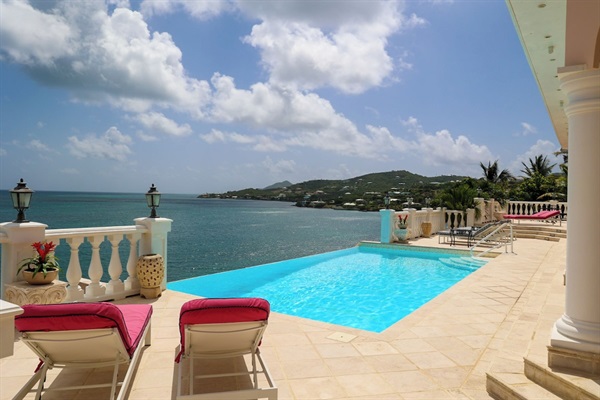Understanding the Initial Purchase Cost in Fractional Ownership
Discover the essentials of initial purchase costs in fractional ownership. Learn about asset valuation, share costs, and financial implications to make informed investment decisions in luxury real estate, yachts, and private jets.
Fractional ownership is an increasingly popular investment model that offers individuals the opportunity to own a share of a high-value asset, such as real estate, yachts, or private jets, without bearing the full cost of ownership. While the benefits of fractional ownership are numerous, understanding the initial purchase cost is crucial for potential investors. This article will delve into the intricacies of the initial purchase cost in fractional ownership, covering the key components, factors influencing these costs, and considerations for prospective buyers.
1. Introduction to Fractional Ownership
Definition and Concept
Fractional ownership refers to a shared ownership model where multiple individuals purchase shares in a high-value asset. Unlike timeshares, which typically offer usage rights for a specific period, fractional ownership provides an equity stake in the asset. This model allows investors to enjoy the benefits of ownership, such as usage and potential appreciation in value, without the financial burden of full ownership.
Historical Context
The concept of fractional ownership has evolved over time. Initially popular in the aviation industry, allowing multiple parties to share the cost of private jets, it has expanded to other high-value assets like luxury real estate and yachts. The growth of fractional ownership is driven by the desire for luxury and high-value experiences without the associated costs and responsibilities of full ownership.
2. Components of Initial Purchase Cost
Asset Valuation
The primary component of the initial purchase cost is the valuation of the asset. This involves determining the market value of the asset, which serves as the basis for calculating the cost of each fractional share. Asset valuation is typically conducted by professional appraisers who consider factors such as the asset’s condition, location, and market trends.
Fractional Shares
Once the asset's value is established, it is divided into fractional shares. The cost of each share is proportional to the asset's total value. For instance, if a luxury villa is valued at $2 million and divided into 10 shares, each share would cost $200,000. The number of shares and the cost per share can vary based on the asset type and the fractional ownership model.
Legal and Administrative Fees
Purchasing a fractional share involves legal and administrative processes, including drafting ownership agreements, registration, and transfer of ownership. Legal fees cover the cost of these services, ensuring that the ownership structure is clear and legally binding. Administrative fees may include costs for property management, maintenance, and other services necessary for the upkeep of the asset.
3. Factors Influencing Initial Purchase Cost
Type of Asset
The type of asset significantly influences the initial purchase cost. High-value assets like luxury real estate, yachts, and private jets typically have higher purchase costs due to their market value and associated expenses. Each asset type has unique considerations that impact the overall cost.
Market Conditions
Market conditions, including demand and supply dynamics, economic trends, and interest rates, play a crucial role in determining the initial purchase cost. During periods of high demand, asset prices may rise, leading to higher purchase costs for fractional shares. Conversely, in a buyer’s market, investors may benefit from lower prices.
Location
The location of the asset is another critical factor. Prime locations, such as beachfront properties or properties in prestigious neighborhoods, command higher prices. The desirability and accessibility of the location can significantly impact the asset's value and, consequently, the cost of fractional shares.
Share Size and Usage Rights
The size of the fractional share and the associated usage rights also influence the initial purchase cost. Larger shares with more extensive usage rights are more expensive. Additionally, some fractional ownership models offer flexible usage plans, which can affect the cost based on the level of exclusivity and access provided.
4. Financial Considerations
Financing Options
Potential investors have various financing options for purchasing fractional shares. Traditional mortgage loans, personal loans, and specialized fractional ownership financing plans are available. The choice of financing can affect the overall cost, including interest rates and repayment terms. It’s essential for investors to explore these options and choose the one that best suits their financial situation.
Tax Implications
Fractional ownership involves specific tax considerations. Depending on the asset type and jurisdiction, investors may be subject to property taxes, capital gains taxes, and other levies. It’s crucial for investors to understand these implications and seek professional tax advice to optimize their investment and avoid unexpected liabilities.
5. Comparative Analysis
Fractional Ownership vs. Traditional Ownership
Fractional ownership offers several advantages over traditional ownership, particularly in terms of cost efficiency and reduced financial burden. Traditional ownership involves bearing the full cost of the asset, including maintenance, insurance, and other expenses. In contrast, fractional ownership allows investors to share these costs, making it a more affordable option for accessing high-value assets.
Fractional Ownership vs. Timeshares
While fractional ownership and timeshares share similarities, they differ in key aspects. Timeshares typically provide usage rights for a specific period without offering equity in the asset. Fractional ownership, on the other hand, grants an equity stake, allowing investors to benefit from potential appreciation in value. This distinction makes fractional ownership a more attractive option for those seeking long-term investment potential.
6. Case Studies
Real Estate
In the real estate sector, fractional ownership has gained traction for luxury properties, vacation homes, and commercial real estate. For example, a luxury beachfront villa valued at $3 million might be divided into six fractional shares, each costing $500,000. Investors can enjoy several weeks of usage per year, along with potential rental income and appreciation in property value.
{{assessment-cta}}
Yachts
Fractional ownership of yachts allows investors to enjoy the luxury of yachting without the high costs of full ownership. A yacht valued at $6 million might be divided into eight shares, each costing $750,000. Owners can access the yacht for a set number of weeks annually, with professional management handling maintenance and operational details.
Private Jets
The private aviation industry pioneered fractional ownership, offering a cost-effective solution for accessing private jets. A private jet valued at $10 million might be divided into ten shares, each costing $1 million. Shareowners benefit from flexible flight hours, professional crew, and maintenance services, making private jet travel more accessible.
7. Conclusion
Summary of Key Points
Understanding the initial purchase cost in fractional ownership is essential for prospective investors. Key components of the cost include asset valuation, fractional shares, and legal and administrative fees. Factors such as asset type, market conditions, location, and share size significantly influence the cost. Financial considerations, including financing options and tax implications, must be carefully evaluated. Comparative analysis shows that fractional ownership offers distinct advantages over traditional ownership and timeshares.
Final Thoughts for Potential Investors
Fractional ownership provides a viable pathway to owning high-value assets with a reduced financial burden. By understanding the initial purchase cost and related factors, investors can make informed decisions and maximize the benefits of their investment. Whether it's a luxury property, yacht, or private jet, fractional ownership offers a balanced approach to enjoying luxury assets and potential financial gains.
This comprehensive guide aims to equip potential investors with the knowledge needed to navigate the initial purchase cost in fractional ownership, ensuring a clear understanding of the investment's financial and practical aspects.
Keep reading




.png)
